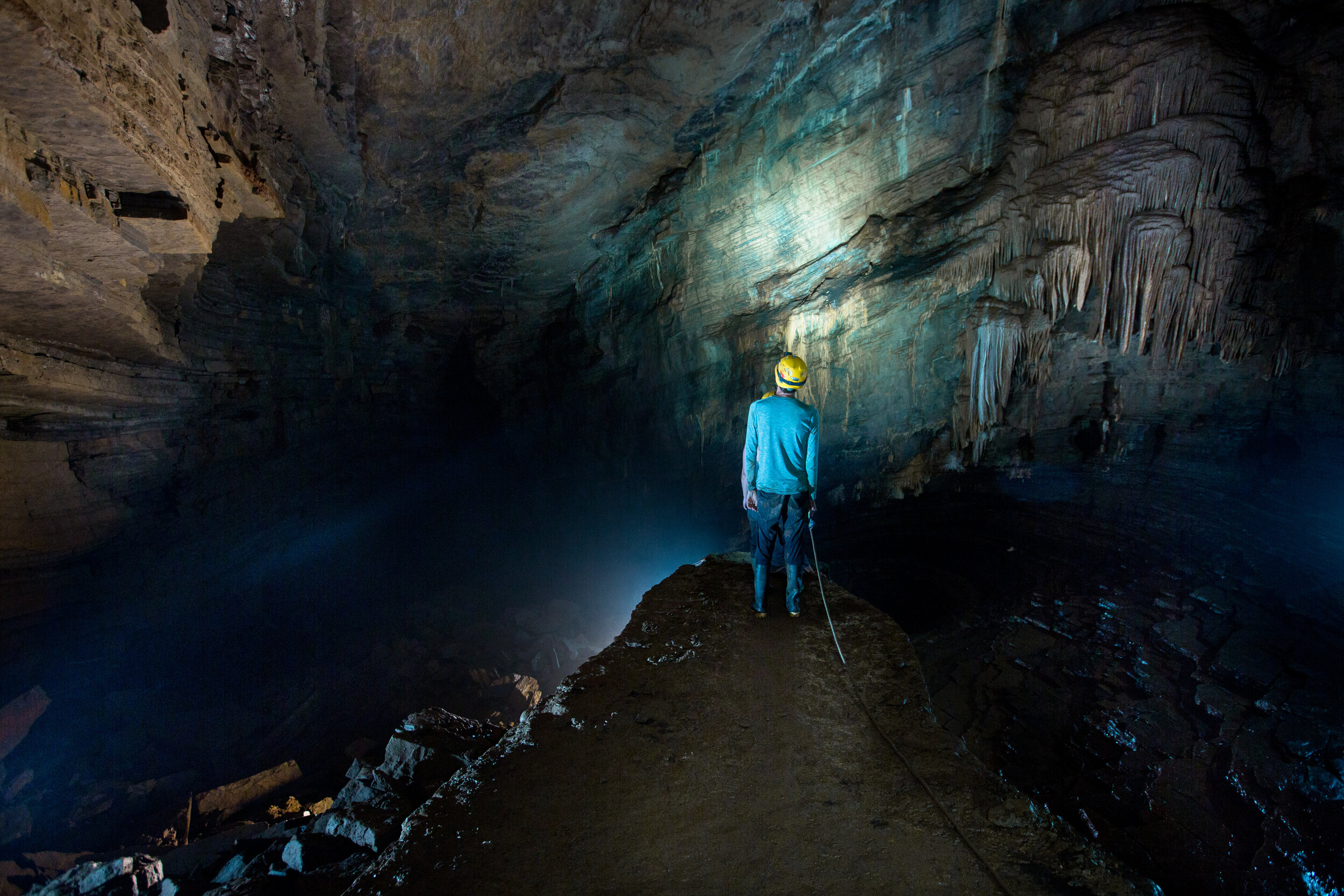The Liminal Compass: The Memory Landscape
Everywhere I look bears the mark of stone’s conversation with water.
It can be seen in the whispers of long forgotten trickles coating the cavern walls. Coloured by wide mineral brush strokes and laid down, layer by layer; the lifetime’s work of a patient artist building a rusty sheen, smooth to the touch. Under my fingertips it feels like shellac. A hard glossy coat to wear over the porous, sandy rockflesh beneath.
I see it in the ripples of limestone that hang in ruffles over our heads. Water’s form, frozen in time; an art nouveau chamber ceiling. Once, the burbling murmur of a river passed this way, its surface licking the stone, running a sculpting tongue through the soft rock like it was ice cream. The undulations left echo the dance of the current, the leaping, rolling and the tumbling. So much life in that movement! In its wake it leaves a billowing fabric; the empty shell of a long-gone, flowing water creature.
Into the troughs of these petrified waves insects gather. Long, translucent alien forms like whispy underworld dragonflies come to make a home of the shells left by water’s memory. They are ethereal hermit crabs, staking their claim as the inheritors of water’s legacy.
I look up to this swirling canopy, standing in the ghost of the river, in the place where the course of water’s body carried all before it. Only the soft cave air remains now where torrents once passed, the dust particles the air carries the only remnant of the swooping, eddying path the water would have taken. The particles dance past the beam of my torch, their silent performance visible just for a moment; their movement mimicking the forgotten water body, copying its choreography.
At my feet lies the mark of water too. The river’s silty bed. Each steps in it breaks the surface of an archive of erosion and settlement, of deep soil built grain by grain. My heel breaks through the record laid down by recent months. My instep sinks through the chronicles of the last few years. The soles of my boots come to rest in the silt of decades past, keeping company with the footsteps of other explorers.
And on the banks of this river stand the yardsticks of this duet between water and stone. The stalagmites are like the pencil marks on a wall marking a child’s growth. They count out the length of a drip, drip conversation between liquid and solid, measuring out the years in millimetres of calacite. One slow word passed from water’s lips to the cave’s ear in each droplet that falls to the floor. An epic poem, recited so slowly that only the poet and the listener grasp its meaning.
This is fragile history. One misstep could break the present from its past, snapping the saga in two.
So, the cave is a memory of what water has told it. Formed by its sculpting powers, its forceful conviction, its’ caresses, its’ dances and its’ artistry. And thus formed, the cave replies: channeling water, guiding it this way and that on its course back to its source.
Stone sheds a film of water over its shellac coat. It teases rivulets along the ripples of its roof. It seeps water down into its silty skin; its damp surface drawing the dust motes of the river’s ghost as filings to a magnet. It reaches up its stalagmite fingers, inviting the next drop to fall into its waiting hands.
Encounter stirs memory. Memory shapes these felt senses of encounter. Experience becomes memory and so shapes the next experience. Water flows and land answers. A conversation. A dance. A looping cycle of call and response, weaving new memories, revisiting the old.
And what of us? We, who are water-beings? More than half of our bodies akin to the river, our minds three quarters a conscious ocean, our veins flowing with plasma; nine-tenths of it water. Have we forgotten that we are in conversation too? Shaping and shaped. The landscape of our memories both river and river bed. Our silty feelings stirred by stone, sky, wind, by the trees that whisper to us and the deep, dark places of the underworld that tug at our minds.
Listen. The land is calling us to remember. To remember who we are. Poets, artists, dancers in dialogue with the world beyond our skin.
